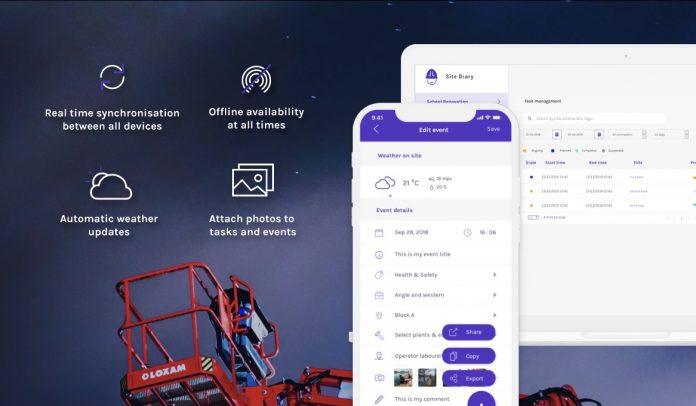UK construction disputes cost the industry £27m in 2017, making them more expensive than their counterparts in the US and mainland Europe. Let’s see how a modern site diary can protect everyone involved and bolster overall productivity
Often the most frustrating part of a subcontractor’s job is getting paid. It can be difficult to prove a particular piece of work has been done, so a well-maintained site diary is a must. It lists the work undertaken and can even make a note of unfavourable weather causing delays.
The benefits of digitisation
Contractors are obliged under the Construction Industry Scheme to keep a record of every payment made to subcontractors; these details must be kept for three years. This is a significant amount of information – and having a robust document management system saves considerable work in retrieving it.
Readability matters
Site diary records must be easy to understand, particularly price estimates and dates. It’s also important that records can be exported in a range of formats, making it easier for decision-makers.
When is a job done?
Conflict can arise when parties disagree on whether a particular job is complete. Construction firms need to protect themselves against substandard work, while contractors must ensure they’re going to be paid. If both parties can see there’s a clear record, they’re far less likely to escalate a disagreement into a dispute.
A picture is worth a thousand words
Images allow work records to be kept in a way that let administrators assess the progress of a job at a glance. Anyone with access to a smartphone can record an image then, when necessary, recall the information easily.
Where was the work carried out?
If an electrician claims to have wired four two-gang plug sockets into an office, and there are 18 offices in the building, this might require a site manager to physically inspect each one. Accurate location records help to minimise this sort of confusion.
Where should a site diary be kept?
Cloud storage is increasingly replacing traditional local storage, as it brings many advantages. The first concerns security – when records are stored in multiple remote locations, they’re far less vulnerable to human interference.
The second advantage is accessibility. With a cloud-based solution, updates are instantly shared. It’s also affordable – it’s always cheaper to consolidate storage in a centralised location than for every site to have its own server.
To conclude, all parties in construction projects can benefit from a detailed and accurate site diary. Modern technology provides a powerful means of maintaining them – they’re an essential tool for construction companies.
Khaldon Evans
Product Owner
Script&Go
Tel: +33 2 30 96 20 69
Twitter: @ScriptandGo_EN
Please note: this is a commercial profile.














